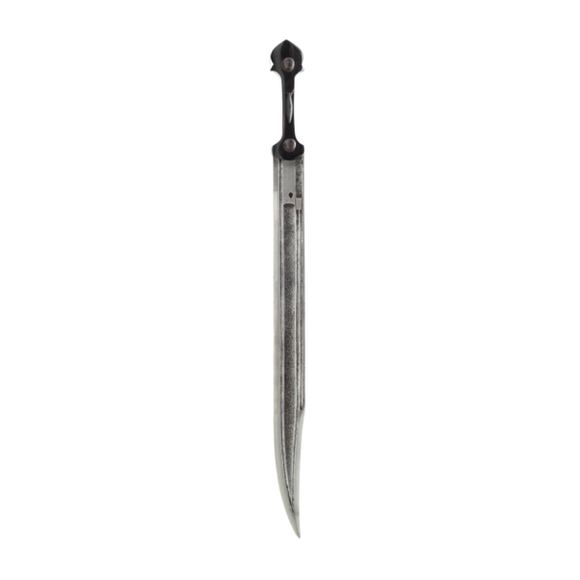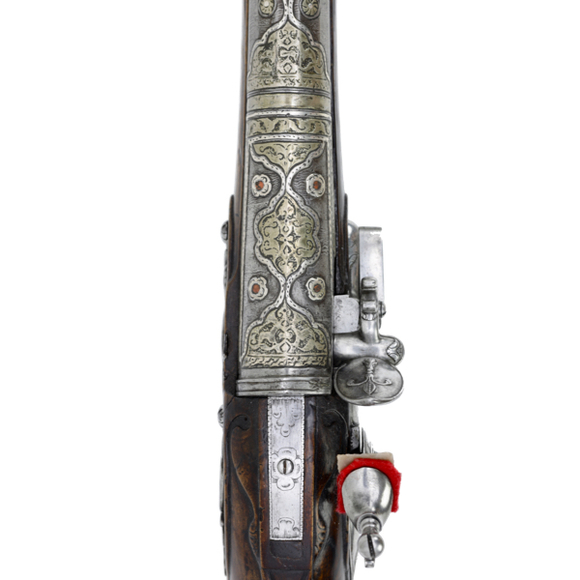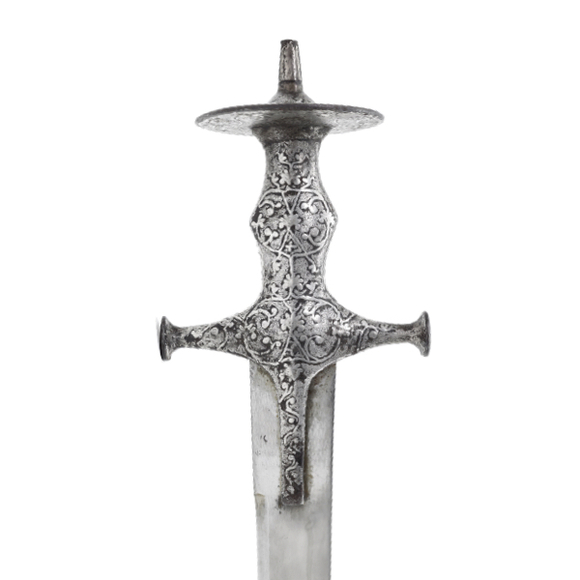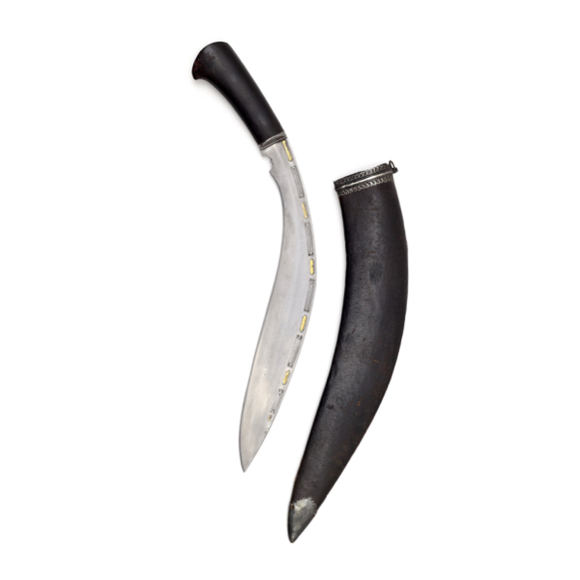With a rare single-edged blade with tight fullering.

Sheathed 85 cm
Sword 76 cm
64 cm
Base 6 mm
Middle 5 mm
5 cm from tip 2 mm
Base 6 mm
Middle 5 mm
5 cm from tip 2 mm
541 grams
16 cm from hilt
Iron, steel, wood, horn, leather, silver.
Ottoman Empire
1790-1791
Description
An old Ottoman yatağan. It has the typical recurved blade with a strong sine and slightly hollow ground sides. It bears decorative engravings on either side, with an additional cartouche with text on the left side. The text is very hard to read, but at least bears the Hijri date 1205, corresponding to 1790-1791. It also contains a teardrop-shaped stamp, commonly used by makers.
The hilt is of a classic form but shows restraint in the size of the ears which could become quite large. Each slab is made of a layering of dark brown horn on light horn, with a layer of brass and then another layer of black horn. Top and bottom of the tang are covered with silver foil, engraged with floral designs. Each slab is further decorated with a multitude of decorative silver studs, some larger, on a background of many small ones.
The wooden scabbard is covered with black leather and with two large silver mounts that are worked in repousse.
Condition
The piece is in relatively poor condition but was apparently well-loved during the course of a long working life. Various losses and repairs to the scabbard. Pitting to the blade, mainly the tip, and many losses to the decorations on the hilt. See photos to get a clear picture of condition.
Conclusion
An old 18th century Ottoman yatağan, this workhorse has been in use for a long period of time and shows signs of repairs, possibly by several consecutive owners. The 18th-century date on the blade makes it interesting to the more research-minded collector because it makes it a benchmark style to judge other undated pieces by.
In poor condition but priced accordingly.












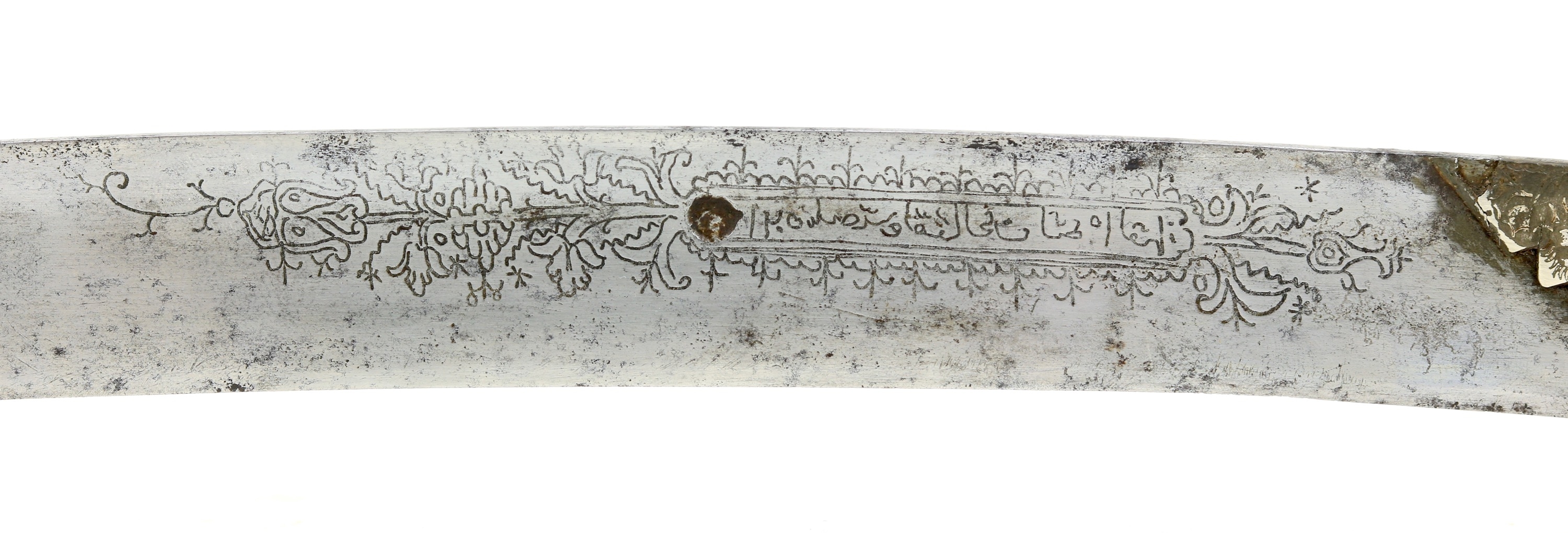




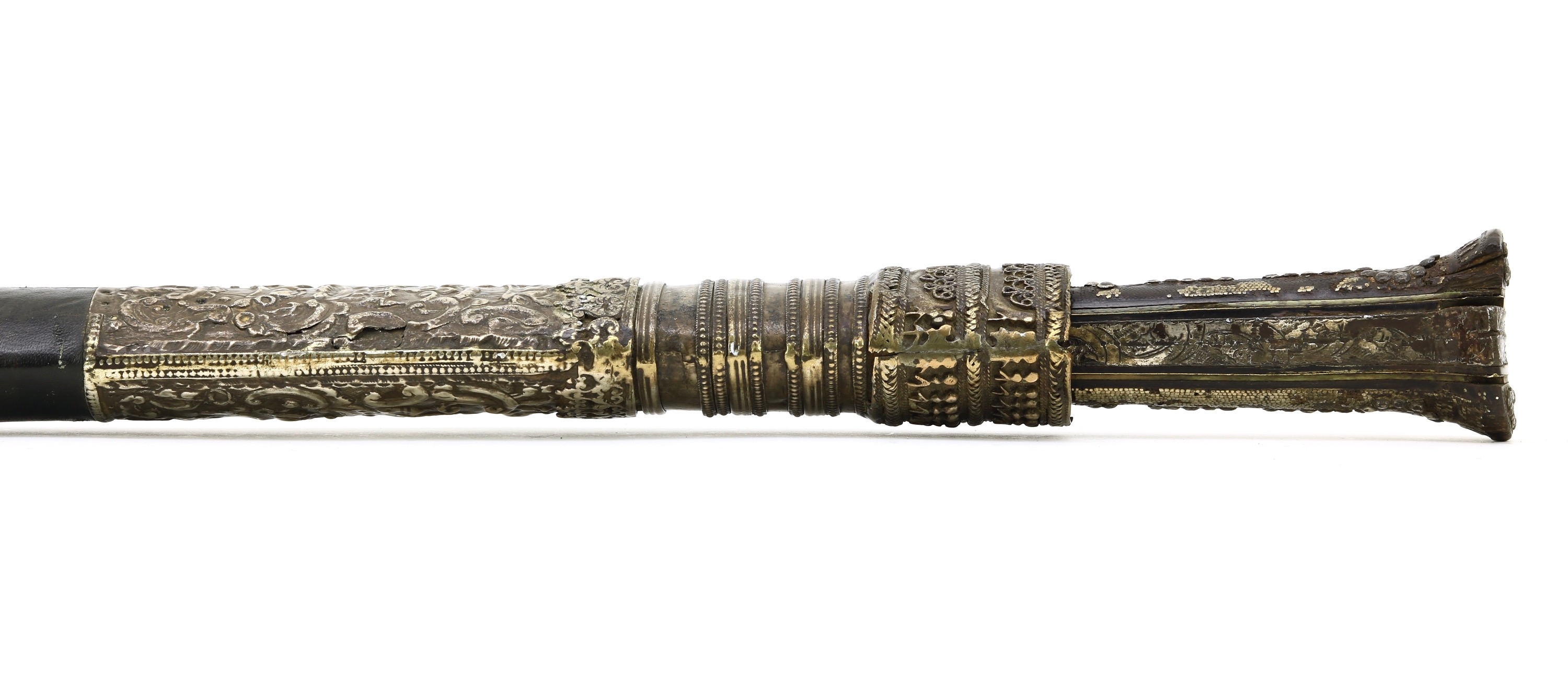

The hilt is in the typical Marwari Rajput style, made by Ram Namar in 1857 A.D.
With a very fine Nepalese blade, but kard-like hilt and scabbard.

